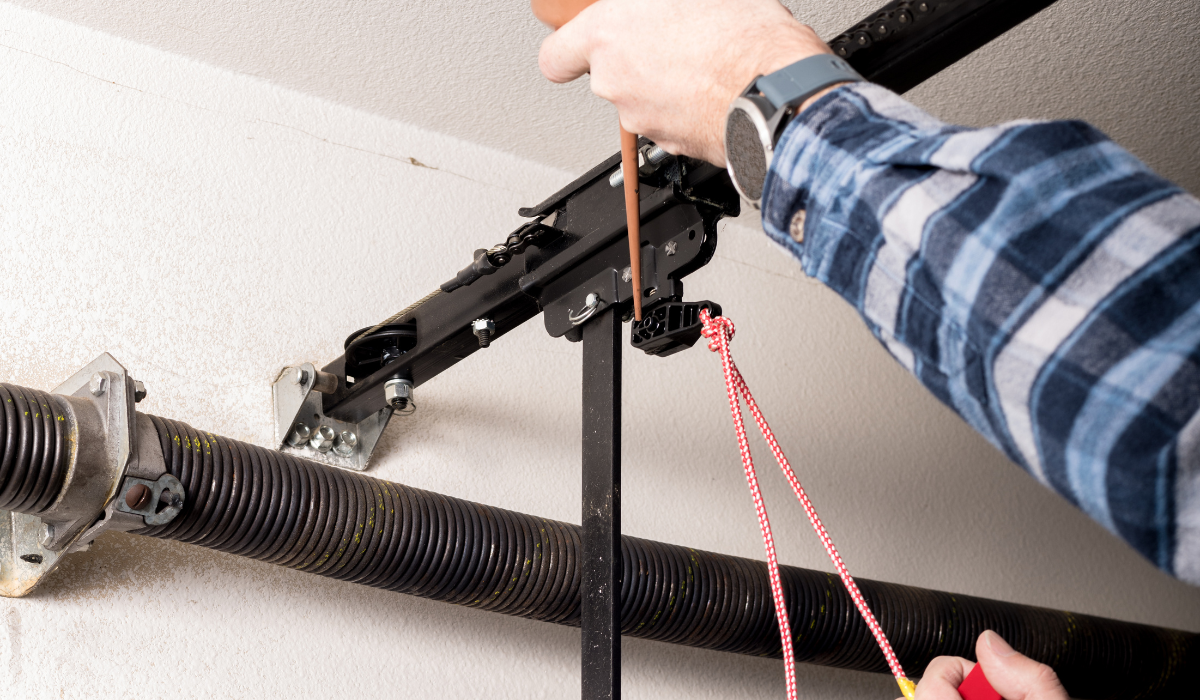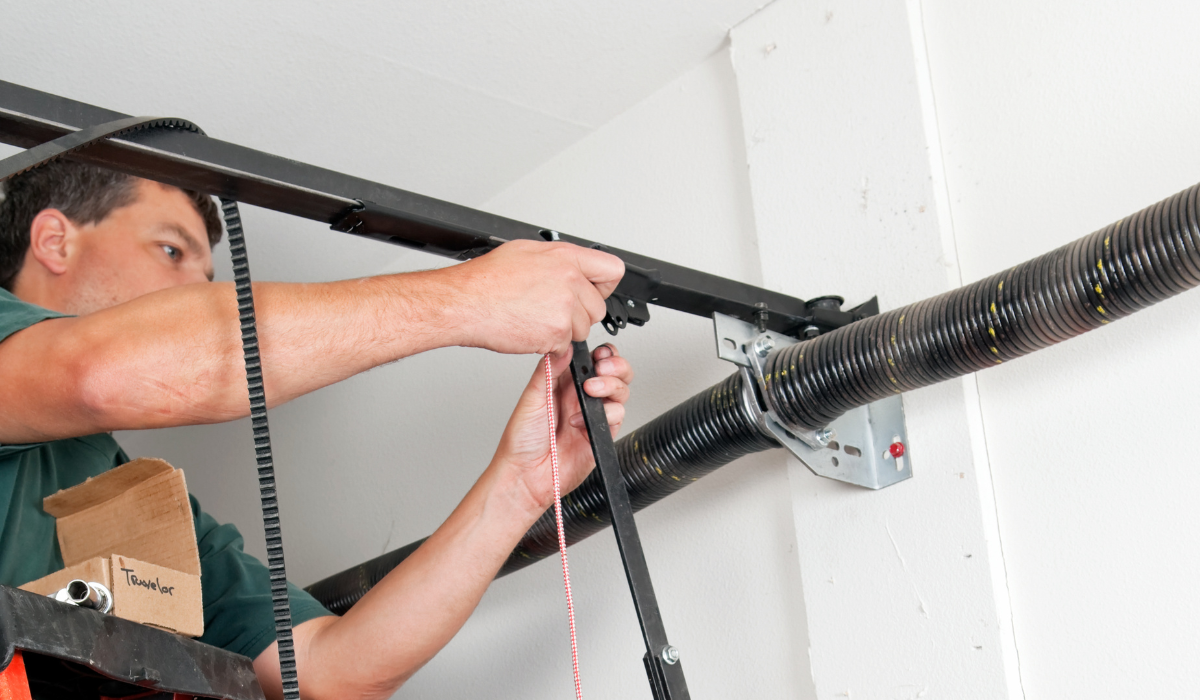Torsion vs. Extension Springs for Your Garage Door – Choosing Wisely
The unassuming garage door spring plays a vital role in your garage door’s smooth operation and safety. These hardworking components counterbalance the door’s weight, allowing it to lift and lower effortlessly. But with two main types of garage door springs available – torsion and extension – deciding which one is right for your needs can be confusing. This comprehensive guide will delve into Torsion vs. Extension Springs, equipping you with the knowledge to make an informed decision.
Understanding Garage Door Springs: A Balancing Act
Imagine your garage door as a giant seesaw. The door acts as one end, while the counterbalancing weight is on the other. This weight offsets the door’s weight, making it easier to lift and close. In a garage door system, springs fulfill this crucial counterbalancing role.
How Springs Work: The Science Behind the Lift
Both torsion and extension springs operate on the principle of stored energy. When the door is closed, the springs are under tension (compressed or stretched). As you open the door, the springs release this stored energy, lifting the door. Conversely, when you close the door, the springs compress or stretch again, storing energy to help lower the door smoothly.
Unveiling the Mystery: Torsion Springs Explained
Torsion springs are famous for modern garage doors, notably heavier ones. They are typically mounted above the doorway on a metal shaft running horizontally across the top of the garage opening. Here’s a closer look at torsion springs:
Anatomy of a Torsion Spring: Coiled Strength
- Tightly Coiled: Unlike extension springs, torsion springs are tightly wound metal coils resembling a thick metal rope.
- Shaft Support: A steel shaft runs through the center of the coil, providing structural support and preventing the spring from unwinding completely.
- Drums and Cones: Each end of the shaft is attached to a drum or cone. These drums connect to the garage door opener or support cables that lift the door.
The Power of Leverage: How Torsion Springs Operate
- Pre-Torsioned: During installation, torsion springs are pre-tensioned (wound tighter) to a specific level to match the garage door’s weight.
- Lifting Leverage: As the door opener raises the door, the torsion spring unwinds on the shaft, exerting a counterbalancing force.
- Safety Cables: Torsion spring systems typically include safety cables that run alongside the spring for added safety. These cables catch the spring if it breaks, preventing it from whipping around and causing damage or injury.
Benefits of Torsion Springs: A Compelling Choice

- Smooth Operation: Torsion springs, thanks to their leverage-based design, provide a smooth, balanced lifting motion for your garage door.
- Reduced Wear and Tear: Torsion springs’ enclosed design protects them from dirt, debris, and extreme weather conditions, leading to less wear and tear and a longer lifespan.
- Safety First: Including safety cables significantly reduces the risk of injury or property damage in case of a spring breakage.
- Ideal for Heavy Doors: Torsion springs are well-suited for heavier garage doors, including steel or wood.
Exploring the Other Side: Extension Springs in Focus
Extension springs are a more traditional type of garage door spring commonly found in older garage doors. Let’s delve into their characteristics:
Built to Stretch: The Structure of Extension Springs
- Elongated Design: Extension springs resemble long metal rods with loops at each end.
- Mounting Points: These loops are mounted on either side of the garage door near the top corners, typically attached to brackets on the wall and the door itself.
The Power of Extension: How Extension Springs Function
- Under Tension: When the garage door is closed, the extension springs are stretched taut, creating tension that counterbalances the door’s weight.
- Lifting Assistance: As the door opens, the springs contract, assisting the opener in lifting the door.
- Vulnerable to Exposure: Unlike torsion springs, extension springs are exposed to the elements and can be susceptible to rust and wear.
Pros and Cons of Extension Springs
- Simple Design: Extension springs are a relatively simple and cost-effective option for lighter garage doors.
- DIY Potential: With some mechanical knowledge, replacing a broken extension spring can be a DIY project. (Always prioritize safety and consult a professional if unsure)
- Susceptible to Wear and Tear: Exposed to the elements, extension springs are prone to rust, fatigue, and breakage over time.
- Safety Concerns: A broken extension spring can snap with considerable force, posing a potential safety hazard. Replacement should be done with caution or by a professional.
Less Common, But Not Forgotten: Springs for Specific Needs
While torsion and extension springs are the most common types, there are a few specialty springs used in unique garage door applications:
- Double Torsion Springs: Double torsion spring systems are employed for hefty garage doors, especially those made of solid wood or with additional insulation. These systems utilize two torsion springs mounted on the shaft for increased lifting capacity.
- Limited Headroom Springs: If your garage has limited headroom above the doorway, where a standard torsion spring would be installed, limited headroom torsion springs offer a solution. These specially designed springs are shorter and can be mounted at an angle to fit within the available space.
- V-Springs: V-shaped springs are occasionally used with extension springs in specific garage door configurations. They provide additional support and stability, particularly for broader garage doors.
Considering the Factors: Choosing the Right Spring
 Now that you understand the intricacies of torsion and extension springs, it’s time to consider which one is ideal for your garage door. Here are some key factors to ponder:
Now that you understand the intricacies of torsion and extension springs, it’s time to consider which one is ideal for your garage door. Here are some key factors to ponder:
- Garage Door Weight: Heavier garage doors made of steel or wood require the greater lifting capacity of torsion springs. Extension springs are sufficient for lighter doors, typically aluminum or fiberglass.
- Headroom Availability: If limited headroom restricts the installation of a standard torsion spring, a limited headroom torsion spring or an extension spring system might be better suited.
- Budget: Generally, extension springs are a more budget-friendly option compared to torsion springs. However, factor in the potential for more frequent replacements with extension springs due to their exposure and wear.
- DIY Skills and Comfort Level: Replacing a broken extension spring might be a manageable task if you’re comfortable with DIY projects and have the necessary mechanical knowledge. Torsion spring replacement is typically best left to a qualified garage door technician due to the safety risks involved with high-tension springs.
When in Doubt, Seek Professional Help
When it comes to choosing and replacing garage door springs, it is always recommended to consult a professional garage door technician. A qualified technician can assess your needs, recommend the most suitable spring type for your garage door, and ensure safe and proper installation.
Your Trusted Partner for Garage Door Spring Solutions
At Gulliver Garage Doors, we are your one-stop shop for all your garage door spring needs in Edmonton. Our team of certified technicians is highly skilled and experienced in handling both torsion and extension springs. We offer a comprehensive range of services, including:
- Spring Repair and Replacement: Our technicians can diagnose spring problems and recommend the most appropriate repair or replacement solution for your garage door.
- Safety Inspections: We prioritize safety and offer thorough inspections to ensure your garage door springs function correctly and pose no safety hazards.
- Garage Door Maintenance: Regular maintenance, including spring inspection and lubrication, can extend the lifespan of your springs and prevent unexpected breakdowns.
- New Garage Door Installation: Our experts can help you choose the right door with the appropriate spring system if you’re considering a new garage door.
We understand that a malfunctioning garage door spring can be a significant inconvenience. That’s why Gulliver Garage Doors offers fast, reliable, and affordable service. Contact us today for a free consultation, and let us help you keep your garage door operating smoothly and safely.

